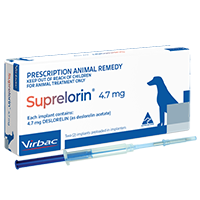
Medical castration: The temporary, reversible option
-
How it Works: Your vet places a tiny implant—similar to a microchip—under the skin between your dog’s shoulder blades. This implant then slowly releases a medication that stops the production of testosterone.
-
What to Expect: Over a few weeks, your dog's hormone levels will drop to a similar level as a surgically castrated dog. This leads to a decrease in sexual behaviours, and your dog will become sterile. The effects of the implant last for at least six months.
-
The Big Advantage: It's completely reversible. Once the implant's effects wear off, your dog's fertility and hormones return to normal. This can be a great way to "test" how castration might affect your dog's behaviour before committing to a permanent surgery.
Both medical and surgical castration can offer several benefits for your dog and your household:
-
Health Benefits: Castration can significantly reduce the risk of certain health issues that are common in older, unneutered males, such as testicular cancer and prostate problems.
-
Prevents Unwanted Puppies: This is especially important if you have both a male and female dog in the same home.
-
Behavioural Improvements: Castration can help reduce common unwanted behaviours like excessive marking, aggression driven by hormones, or the urge to roam and escape to find a mate.
It's best to talk to your vet to discuss which option is right for your dog and to get personalised advice on the best course of action.
- Medical reasons
Unsterilised dogs can, with age, develop various diseases such testicular tumours, perianal gland tumour and prostate disease. Castration, medical or surgical, will greatly reduce the severity and the risk of these diseases. - Prevention of unwanted litters
Especially when a male and female dog live in the same household, it may be necessary to consider castration to avoid unwanted puppies. - Behavioural problems
Some male dog behaviours such as: excessive libido, urinary marking and running away may be undesirable to the owner. Castration can help to reduce or to eliminate them.


